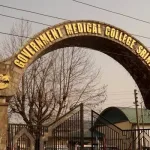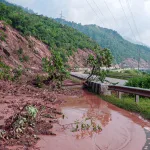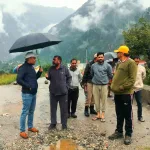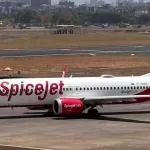Training is a practice in which tree growth is directed into a desired shape and form. Training young fruit trees is essential for proper tree development. The goal of tree training is to direct tree growth and minimize cutting. The principle object in training is that a young tree is to develop strong framework of scaffold branches, to admit more sunlight and air to the centre of the tree and to expose maximum leaf surface to the sunlight, to direct the growth of the tree so that various cultural operations, such as spraying and harvesting are performed at the lowest cost, to protect the tree from sunburn and wind damage and to secure a balanced distribution of fruit bearing parts on the main limbs of the plant.
Pruning is the proper and judicious removal of plant parts such as shoots, spurs, leaves, roots or nipping away of terminal parts etc. to correct or maintain tree structure and increase its usefulness. It is done to make the plant more productive and bear quality fruits, increase longevity of the tree, make it into manageable shape and to get maximum returns from theorchard.
Removal of a branch removes not only stored carbohydrates but reduces the potential leaf surface as well. It increases fruit size, nitrogen per growing point and stimulates growth near the cut. It is generally done to control the size of the plant, to control the form (structural make up of the plant) which involves number, placement, relative size and angle of branches, to improve quality of fruits by better light distribution, to remove diseased, criss-crossed, dried and broken branches, to remove the non-productive parts in order to divert the energy into those parts that are capable of bearing fruits, to develop proper proportion of root- shoot ratio, to regulate the fruit crop, to decrease chances of insects-pests, diseases and winter injury are less.
There are number of types of pruning which include thinning out, heading back, thin wood pruning and bench cut. Thinning out includes the entire removal of a shoot from the point of its origin and no re-growth is allowed to occur from the cut ends. Heading back refers to theremoval of terminal portion of branch/shoot which encourages lateral growth from the remaining shoot. Thin wood pruning refers to the removal of slow growing, weak, under hanging branches or shoots which are either not fruiting or producing fruits of low quality. Bench Cut removes vigorous, upright shoots back to side branches that are relatively flat and outward growing.
Most often pruning is done during the winter and is commonly referred to as dormant pruning. Such pruning should begin as late in the winter as possible to avoid winter injury. Pruning goes well with cool weather.
Pruning is also done during summers- referred to as summer pruning. Its severity is much less, less common, more specific and selective. Eliminates an energy or food producing portion of the tree and results in reduced tree growth. To minimize the potential for winter injury, summer pruning should not be done after the end of July. Better illumination of leaves and fruits. Improved assimilation in centre of trees. Better fruit colour, fruit quality and storage. Slower total growth of trees. Less wood production. Less total pruning effort and improved work efficiency. Less danger of winter injury.
Training Systems
Central Leader System
Main trunk extends from the soil surface to the total height of the tree. Several side branches grow at different heights in various directions. Such trees are structurally best suited to bear crop load and to resist the damage from strong winds. Trees under this system grow too tall and are less spreading. Tree management (spraying, pruning, thinning and harvesting) is difficult.
Open Centre System
Main trunk is allowed to grow upto 1.0 m by cutting within a year of planting. 3-5 lateral branches are allowed to develop from short main stem. Widely used for peaches and is good for mechanical harvesting. The trees so trained allow maximum sunshine to reach their branches. Better coloration of fruits on the interior side of the tree. Trees are more fruitful and low spreading tree greatly facilitate operations like spraying, pruning, thinning and harvesting.
Such trees are structurally weak, and their limbs are more likely to break with crop load and strong winds. This system does not only need severe pruning to start with but also constant effort to maintain its form through drastic pruning treatment.
Modified Leader System
This training system is most acceptable for commercial fruit cultivation. This system combines the best qualities of the central leader and open centre systems.A leader develops on the young tree until it reaches the height of 2-3 m and then the growth is restricted. Laterals are selected to ascent in a spiral fashion up the central trunk and are cut until the proper number and distribution of branches have been obtained. The branches are well distributed, allowing plenty of sunshine to reach the interior of the tree. The tree is structurally strong and not prone to limb breakage.
Owing to limited height of trees, spraying, pruning and harvesting may be done easily.
Pruning Bearing Trees
Since pruning both affects and is affected by tree vigor, careful attention to other cultural practices is absolutely essential for a successful pruning program. Fertilizer must be regulated to support consistent, moderate vegetative growth. Since crop load markedly affects vigor, uniform, annual production must be encouraged by judicious fruit thinning. On susceptible sites, frost control practices should be employed to avoid the disastrous invigoration of a complete crop loss. The pesticide program should maintain a healthy, functional leaf surface throughout the growing season. Where vigor remains too high in spite of conscientious efforts to reduce it, the cultural program should be supplemented with early-season applications of Alar.
When to prune
Most of the pruning of bearing trees is done during the dormant period. In some cases, trees are pruned during the growing season, but summer pruning is generally reserved for special problems and will be considered separately. In the following discussion, unless specifically stated otherwise, all comments will refer to dormant pruning.
The trees can be pruned at any time during the winter months, but in the Northeast it is best to delay pruning until midwinter. Earlier pruning, before maximum hardiness has developed, greatly increases susceptibility to low temperature injury. This is particularly important if large cuts are required. Low-temperature injury at pruning cuts is often the forerunner of various cankers and wood rot diseases.
Sometimes unfavorable weather significantly delays pruning, and growth starts before it is completed. In general, bearing trees in good vigor will not be adversely affected by late pruning if it is completed before bloom, but later pruning will reduce vigor. In orchards with a black rot problem, pruning after growth starts may increase the spread of this disease. With late pruning, the brush on the orchard floor may interfere with other late winter and early spring operations such as fertilization and the application of the first pesticide sprays.
Differences in weather might permit earlier or later pruning in some years.
How to prune
The pruning program should be planned well in advance of the actual work. Observations during the previous growing season should indicate where changes in the pruning program are required. Failure to satisfactorily control insects or diseases may indicate that the trees are too high or too thick for good spray coverage.
Poor fruit color may be due to shading or excessive vigor. Low vigor may be responsible for undersize fruit, whereas oversize fruit may be associated with high vigor which is often a response to over pruning. Trees that are too tall or too thick may provoke harvesting problems. Uneven responses to growth regulators, such as thinning chemicals and Alar, may indicate unacceptable differences in vigor between the top and the bottom of the tree. All of these are symptoms of unsatisfactory pruning and suggest that adjustments are required in the type and/or amount of pruning.





